For many years, television has acted as a window into society, encompassing both achievements and social disputes. Television programs challenge conventional boundaries, but certain episodes manage to offend viewers enough to provoke ethical responses or violent threats toward the networks. These episodes, which feature dark humor, graphic content, and culturally sensitive subjects, have sparked conversations that led networks to withdraw them from broadcasting.
The following list examines ten prohibited television episodes that caused major turmoil by exposing changes in societal tolerance levels for television content. Television's broadcasting power is visible to all. However, broadcasters must also monitor their content.
Disclaimer: This article is based on the writer's opinion. Reader discretion is advised.
The list of 10 banned TV show episodes that stirred major controversy is provided below
10. SpongeBob SquarePants (Mid-Life Crustacean)
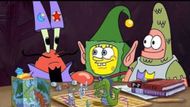
Mid-Life Crustacean gained massive controversy from a single specific sequence. During this episode, Mr. Krabs showed signs of feeling old while trying to appear young. A humorous evening is organized for Mr. Krabs. The adventure leads them to participate in a panty raid where they secretly break into houses to steal women's innerwear. They unexpectedly break into a residence, which proves to be Mr. Krabs' mother's house.
Many parents and viewers thought the cartoon comedy was unsuitable for young audiences. People mistook the short, goofy bit for a mature and disturbing scene. Nickelodeon took down the episode from all broadcast channels and streaming sites in 2018. The episode no longer airs because Nickelodeon chooses to protect the viewership of young children.
9. The X-Files (Home)

Home is among the most distressing productions ever broadcast. The family conceals their deformed mother beneath their bed. The family members follow strange, frightening customs. The family chooses to reside in a small settlement while pretending to maintain their secret by inflicting physical harm. The narrative features both incest and violent behaviors that caused widespread audience shock. The airing restrictions that Fox News placed on this episode remained active for numerous years. It was only shown once on TV.
The fans appreciated the craftsmanship behind the project even though they found it frightening. As a cult favorite, this show eventually attracted a sizable and devoted audience. The TV audience during that time reacted negatively to the broadcast because they saw it as too disturbing to put on air. The family horror elements created a situation that sparked extensive debate about the show.
8. Fear Factor (Hee Haw! Hee Haw!)

Fear Factor faced major issues before its initial broadcast of this specific episode. The gory and terrifying obstacles on Hee Haw! Hee Haw! made it so popular. These obstacles pushed this stunt to the brink of acceptability. The contestants were challenged to consume donkey sp*rm and ur*ne. A large number of TV viewers thought the s*m*n-drinking attempt was too disgusting to broadcast. The TV show had previously displayed unusual eating challenges, but this one pushed the envelope.
Many viewers and critics found this content offensive to people of all ages. The network decided to pull the episode from broadcast after NBC expressed its agreement. The episode never aired and remained unavailable for viewing anywhere on the internet. The network stated that they refused involvement in such a detrimental and shocking event.
7. The Ren & Stimpy Show (Man's Best Friend)
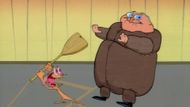
Man's Best Friend was banned from being broadcast due to the severe violence depicted in it. Inside the cartoon, Ren repeatedly strikes an individual with an oar. Viewers watched a prolonged emotive sequence before deciding the show crossed boundaries to be acceptable for child viewers. The show was already viewed as having an odd mix of unpredictable elements and content. This particular installment breached the broadcasting standards that Nickelodeon could tolerate.
The storyline included mature content featuring smoking and dominating family rules. Nielsen decided the content was inappropriate for child viewers. They didn’t show it on TV. The cartoon was eventually aired on a broadcast station that allowed adult cartoons. For many years, viewers pondered this episode. Man's Best Friend gained popularity because the network prohibited its airing. According to network standards, cartoons may occasionally contain inappropriate content for younger viewers.
6. The Golden Girls (Mixed Blessings)
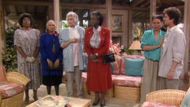
Mixed Blessings initiated multiple difficulties in its subsequent years. One scene in particular involves the two main characters covering their faces with mud masks. Individuals interpreted it as blackface, even though blackface has previous racist roots. Thus, Hulu decided to take down the episode from its platform. Many people were disappointed by the reaction, which they claimed was simply a communication error.
The viewers who approved the decision asserted that the depicted image evoked negative reactions. The creative team denied any intention to offend others. The issue proved to be overly sensitive due to its historical racial connotations. Mixed Blessings illustrates how modern standards differ from those of the past. Previous practices that once had approval now face rejection in the present time. The scene became central to expanding discussions about racist elements in television shows from earlier times.
5. Community (Advanced Dungeons & Dragons)

The show eliminated one particular segment from its content. In the Community, Chang plays a fantasy character, applying dark makeup to play a dark elf as he joins his friends in a Dungeons & Dragons role-playing game. The viewers who watched Advanced Dungeons & Dragons believed the black facial makeup was an example of blackface. The practice of Blackface originates in a painful history because many perceive it as racially offensive. The portrayal offended the public, even though no one intended to harm anyone. During interviews, the show producers assured viewers that their goal was never to cause harm.
According to Netflix and other streaming platforms, this episode was removed due to a single scene issue. Fans showed disappointment since they enjoyed the narrative. The show focused on a friend who was depressed. The single sequence triggered a major controversy. Individual small decisions frequently result in modern-day disagreements.
4. South Park (Super Best Friends)
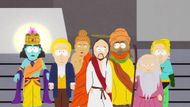
The depiction of Prophet Muhammad as a cartoon character makes the Super Best Friends episode extremely contentious. The episode's plot features Peter as a superhero among religious figures like Jesus and Buddha. The general public remained unreactive when this development occurred during that period. The episode disappeared years later after someone threatened violence regarding similar cartoon images.
Drawings of Muhammad are considered a violation of respect in the Islamic tradition and elsewhere in the world. People accused South Park of ridiculing religious beliefs. Comedy Central canceled the episode due to concerns about insensitive behavior. The episode is no longer available on any official platform or website where users can access content. Viewers consider this episode among the most sought-after banned South Park content.
3. Family Guy (Partial Terms of Endearment)

Social controversy surrounded this episode of Family Guy when it introduced abortion as a subject matter in Partial Terms of Endearment. The plot details how Lois becomes pregnant to carry her friend's child via surrogate motherhood. She had to make decisions about the unborn child following the car accident that claimed her friends' lives.
The show reveals her consideration regarding an abortion. This offended a lot of individuals. Abortion draws intense emotions from audiences because it constitutes a major moral and ethical issue. Some viewers accused Family Guy of satire or insensitivity in its issue presentation. An abortion theme in the episode caused Fox Networks to remove it from a TV broadcast. It was only released on DVD. Many viewers find the episode's content too sensitive, so it is not shown on any television platforms these days.
2. The Simpsons (Stark Raving Dad)
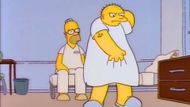
When Stark Raving Dad was first released, it was met with widespread enthusiasm. A man suffers from the delusion that he is Michael Jackson. The genuine voice of Michael Jackson contributed to the character, even though he did not provide singing voices. Viewers enjoyed watching this episode for several years. The producers eliminated the controversial episode in 2019. A documentary about Jackson resulted in the episode's removal due to serious accusations against him. The producers decided to respect those who have suffered.
People's opinions on its departure were divided; some were happy with the decision, while others were sad. The continuing broadcast of the episode was discontinued on television and streaming platforms. This example illustrates the ongoing changes in public opinion over time.
1. South Park (201)
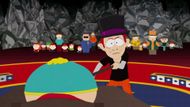
The most censored episode of South Park is 201. The television series introduces a cartoon depiction of the Prophet Muhammad in the two related episodes. The representation particularly infuriated Islamic organizations. An extremist organization sent the TV show's producers dangerous threats after it aired. The portrayal of Muhammad was considered dangerous and highly offensive by these individuals. As a result of this conflict, Comedy Central banned the broadcast of the show.
The producers removed all Muhammad's visual depictions and added sound effects to indicate whenever his name was mentioned in the show. Despite these modifications, the episode was still deemed unsafe. 201 disappeared from TV screens after its initial airing. Both the episode and Muhammad's portrayal are omitted from all streaming services. The airing of this episode became notorious for endangering lives in reality.
These ten episodes significantly impacted TV history because they caused a public and industry reaction. Certain TV episodes were banned because they were deemed overly violent or unsettling. Other episodes initiated broad public dialogues about race issues, spirituality, and ethical conduct.
The TV networks decided to remove offensive information from their broadcasts to protect their viewers and avoid potential issues over what should and should not be aired. Due to eventual availability issues, these episodes remain difficult to view publicly, but their influence persists. These taboo episodes continue to fuel conversations about censorship limits alongside creative freedoms while questioning the ethical responsibilities of content creators to shape public discussions.
